Worried about the Brown Tips on Indoor Plants? Looking for the reasons that might be causing them? Here they are with the “how to solve them” guide.
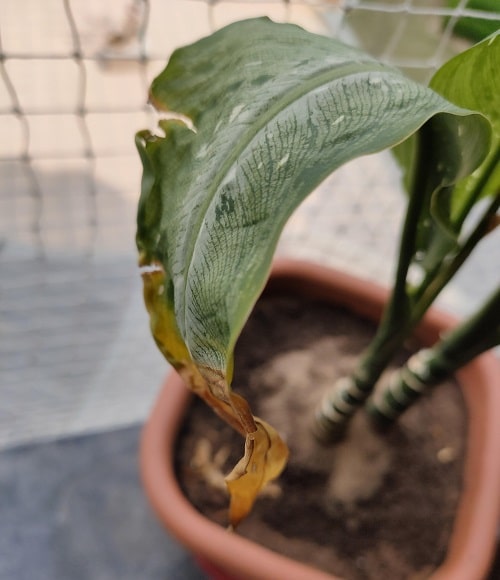
Brown Tips on Plant Leaves can be a cause of concern, and if you’re not going to take care of it on time, it can spread to the entire plant. There can be multiple issues behind this; identify and rectify them one by one with the help of this guide.
Here are the top mistakes to avoid when re-potting indoor plants
Reasons that Cause Brown Tips on Indoor Plants
1. Inconsistent Watering Schedules
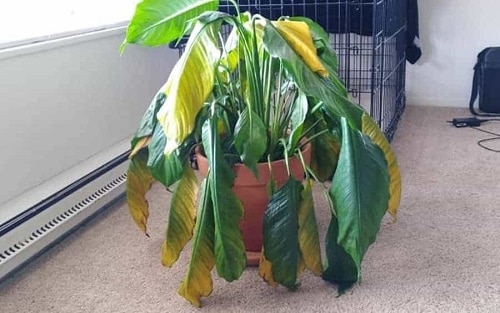
Brown leaf tips are often caused due to the way you water your plants. Underwatered plants suffer a lot and have wilting, brittle leaves, where their tips turn brown and fall off.
Overwatering also turns the foliage brown and yellow. But there is a slight difference between these conditions–An overwatered plant has soft, mushy, and limp leaves, whereas the underwatered plant has crinkly and dry leaves.
Cure
- In Case of Overwatering: Allow the soil to dry out a bit between watering. Always water the plant when the soil feels dry to the touch. If the plant has wilted too much, then take it out from the pot, trim the rotten roots, apply fungicide on the remaining ones, and re-pot it using a fresh potting mix. Reduce watering for a few days.
- For Underwatered Plant: Inconsistent watering puts the plants under stress, resulting in brown leaf tips. Water your plant well, and it’ll be back to life soon.
2. Too Much Sunlight
Exposing the plant to too much sunlight can burn the tips and edges of the leaves, causing brown and burnt spots. It can also scorch the foliage completely in the long run.
Cure
Make sure that the plants are not exposed to the harsh sun for a long duration. Afternoon sunlight is a big no for indoor plants. Also, avoid keeping sensitive plants too close to a south or west-facing window where they could be exposed to the intense sun.
3. Lack of Humidity
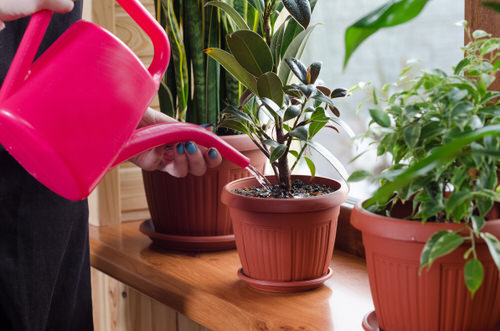
Lack of moisture in the air, especially in winter or in a hot climate in summer when you run an air conditioner, also makes the plants’ leaf tips brown. Generally, the majority of houseplants love humid surroundings, and dry indoor air may cause brown tips.
Cure
- Misting the foliage can solve this issue for a brief time. Grouping houseplants together or keeping them on a saucer filled with water also boosts humidity around them.
- Using a humidifier and a humidity meter is the best solution.
4. Lack of Nutrients
The deficiency of Magnesium, Calcium, Iron, or Phosphorus can cause brown tips. It may also cause the plant to wilt and droop.
Cure
Ensure that you are correctly feeding the plant using a fertilizer that contains these micronutrients. Refer to the label for the right dosage.
5. Salt Build Up in the Soil
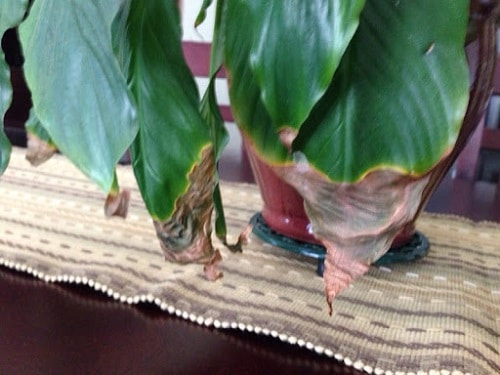
Overfertilization is one of the leading causes of brown tips on indoor plants. Salt build-up prevents the roots from absorbing enough moisture and burns them, making the plant water-deprived, which causes brown tips.
Keep in mind that less is more, as most houseplants require a weak dose of fertilizer because they live in an indoor environment where light is insufficient, and their growth is limited.
Cure
Feeding houseplants with weak strength and less frequently can prevent it. If it has already happened, flush the soil by keeping the plant under running water so that the excess nutrients leach away.
6. Improper Air Circulation
One Japanese study found out that air circulation can increase or decrease the net photosynthetic rate in tomato seedlings in a greenhouse. Similarly, when your houseplants don’t get the proper air circulation, it hampers the photosynthesis in them, which might cause the foliage to get yellow spots and brown tips.
Cure
Using a ceiling or oscillating fan provides the required air circulation. Do not group the plants tightly together, and ensure there’s enough space between them. Keeping plants near a well-ventilated window or door is a great option.
7. Cold Damage
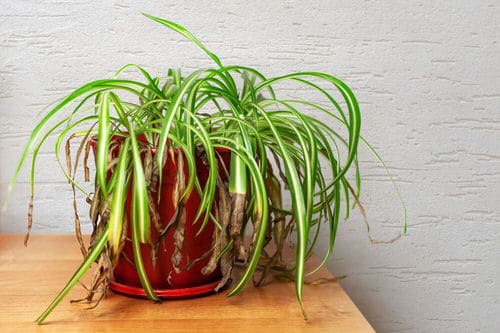
Many houseplants are not used to cold temperatures. Keeping the plant in a way that it is on a windowsill or a cooling vent, where it is exposed to the cold drafts of air. All this can damage the foliage by puncturing the plant’s cells, which causes brown edges and tips.
Cure
If you notice leaf tips turning brown during winter, try to encourage the temperature and humidity around the plants.
8. Away from Windowpanes
The surface of the glass on the window gets too hot or cold when it comes in contact with the outdoor air. The leaves may turn brown if they touch the glass.
Cure
Always ensure that leaves are not touching the windowpane, especially when the weather is harsh.
9. Tap Water
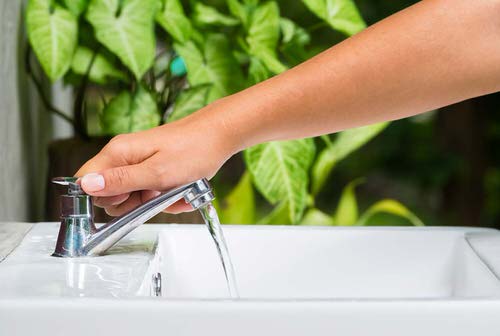
The public water supply might contain chlorine and fluoride, and other minerals like calcium in a high amount that affects plant growth. These minerals build up in the soil over time and cover the roots, preventing the plant from absorbing nutrients and water–ultimately causing brown tips on plants and white spots. Chlorine toxicity also increases the chance of brown leaves. You can learn more about this here in this educative article.
Cure
You can solve this issue by allowing the tap water to sit for 24 hours or overnight, especially if the water contains chlorine. If possible, you can use soft water, RO water, or boiled water after cooling it down.
10. Pesticides
Some harsh chemical pesticides can cause a chemical burn on the foliage and roots, resulting in burnt leaf tips. So, be careful while treating fungal and bacterial problems.
Sometimes, DIY homemade pesticide recipes that contain an excess amount of dish soap or oil can be the reason–to avoid this, always do a patch test on several leaves before applying on all plant parts.
Pests like spider mites could also contribute to brown patches on leaves. Some fungal diseases like bacterial leaf spots and powdery mildew are also one of the reasons.
Cure
Avoid the use of harsh chemical pesticides on the plants. Always buy a quality product.
Conclusion
Brown tips on houseplants can be due to multiple things, so it is best to read this guide carefully and observe each of the suggested reasons to find the proper solution.



My calada rose leaf dry up n l cut off everything to let them grow again, is that correct? Please advice. Thanks